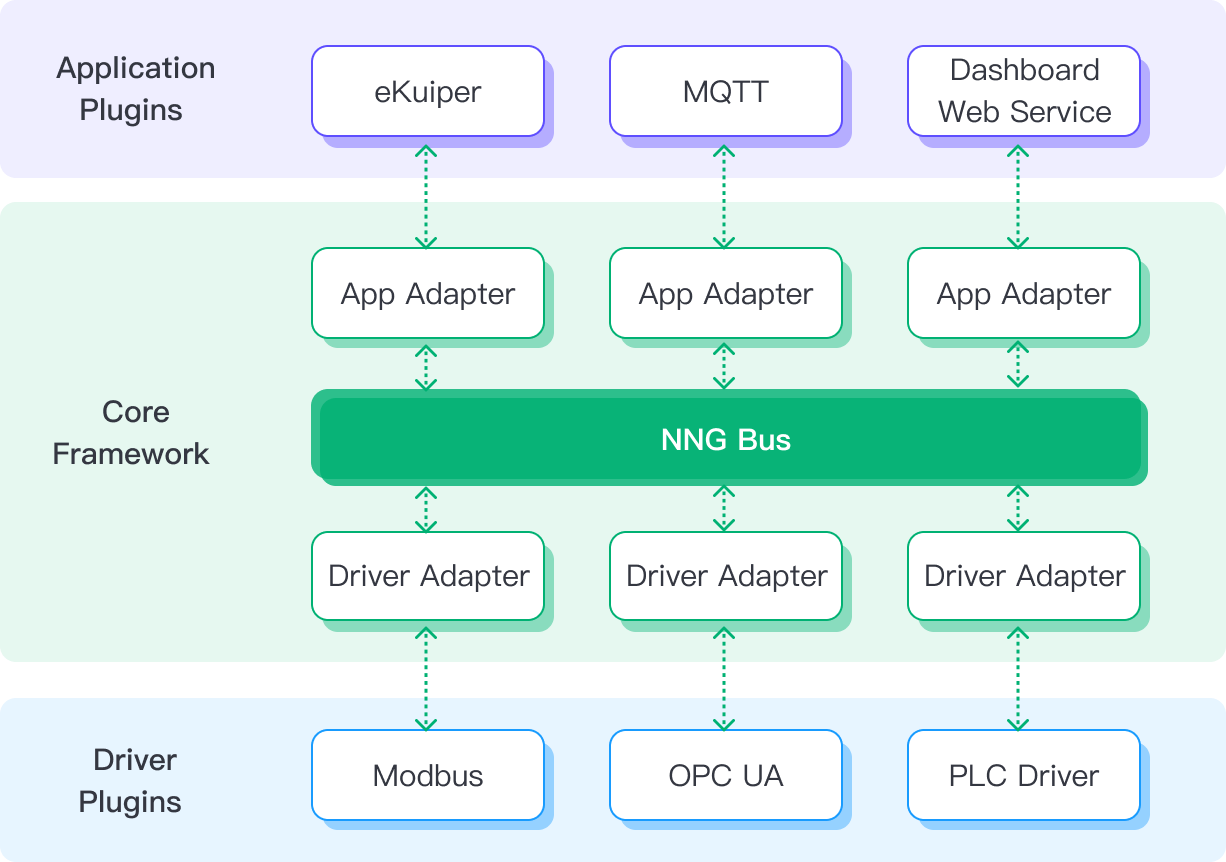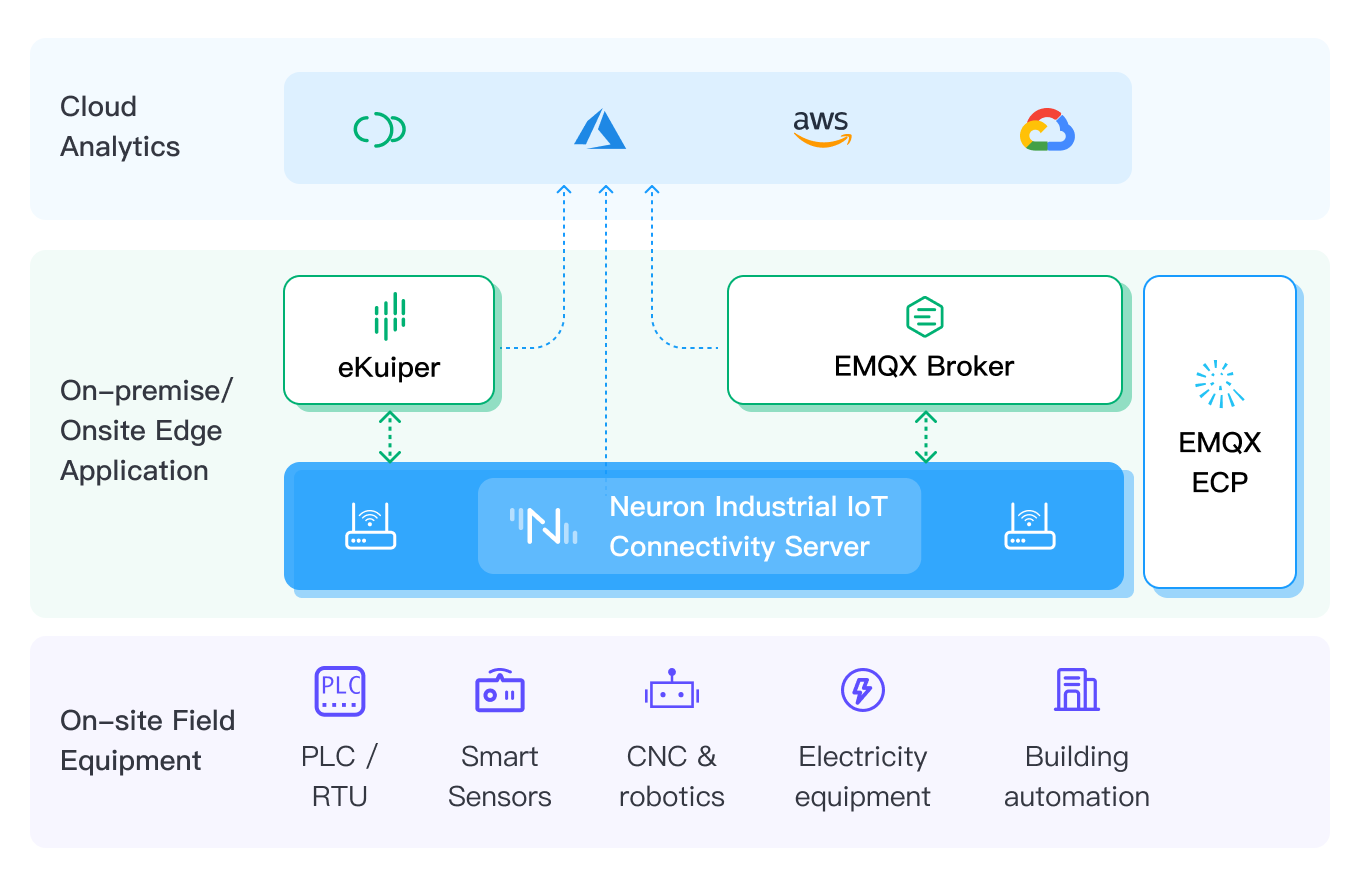Why Neuron
Multiple Protocols
Support access to 20+ kinds of industrial protocols, including Modbus, OPC-UA, and more.
Edge Native
Run in real-time to leverage the ultra-low latency industrial data processing at the edge.
High Performance
Connect hundreds of industrial devices and process over 10,000 data points effortlessly.
Ultra Lightweight
Has lower memory footprints, less than 10M, running on low-profile hardware.
Portable Deployment
Deploy on all types of edge hardware on X86, ARM, RISC-V, and other architectures.
Quick Start
Run with Docker
$ docker pull emqx/neuron-en:2.6.6 $ docker run -d --name neuron -p 7000:7000 --privileged=true --restart=always emqx/neuron-en:2.6.6
Build from source
$ git clone https://github.com/emqx/neuron $ cd neuron $ git submodule update --init $ mkdir build && cd build $ cmake .. && make
Key Features
Connectivity
Support the broadest range of industrial connectivity, including assets, devices, and applications.
Accessibility
Provide data access for industrial applications, such as MES or ERP, IIoT and data analytics software via MQTT or API.
Built-in MQTT & WebSocket
Come with built-in MQTT and WebSocket protocols to help build IIoT applications effortlessly.
Stream Processing & AI/ML
Create streaming SQL scripts in an integrated stream processing engine for AI/ML and control logic.
Security
Support encryption TLS, HTTPS, and JWT auth to ensure the data security in transmission.
Plug-in Extension
Provide SDK for extending more southbound drivers and northbound applications plugin services.
Architecture
Neuron is designed on a modern message bus architecture that is high-performance, scalable, and extensible.
- Asynchronous I/O - Built on the optimized NNG's asynchronous I/O framework
- SMP & Multi-threading - Scale out easily to engage multiple cores in the modern SMP system


Integrations
Neuron can seamlessly stream real-time industrial data directly into Industrial applications (MES, SCADA, etc) by integrating with various Cloud platform including EMQX Cloud, AWS, Google Cloud Platform and Microsoft Azure.
Neuron also provides an integrated SQL streaming processing rule engine eKuiper for data analysis AI/ML to leverage the benefit of low-latency processing at the edge side.
Better Together with EMQX
Quickly deploy EMQX anywhere on-premises or in private, hybrid, and public clouds.
Open Source
docker pull emqx/emqx docker run -d --name emqx -p 1883:1883 -p 8083:8083 -p 8084:8084 -p 8883:8883 -p 18083:18083 emqx/emqx
Cloud Serverless
Start for free with the cloud serverless MQTT messaging services built on EMQX. Pay-as-you-go with the free tier of 1M session minutes/month.
Try Free →